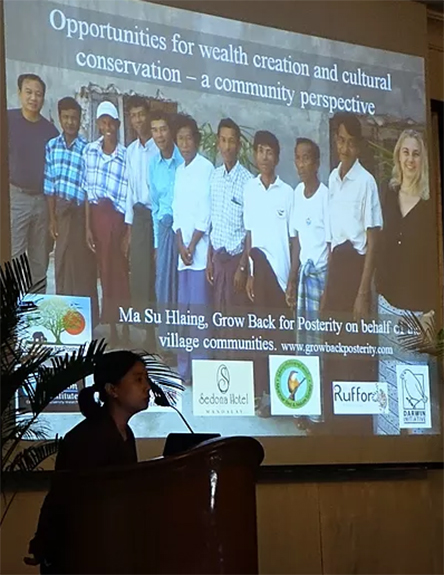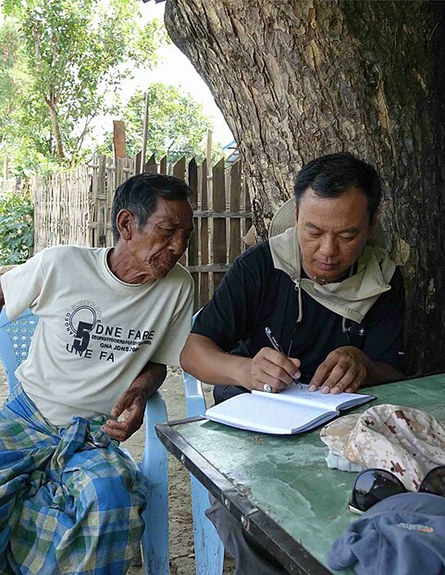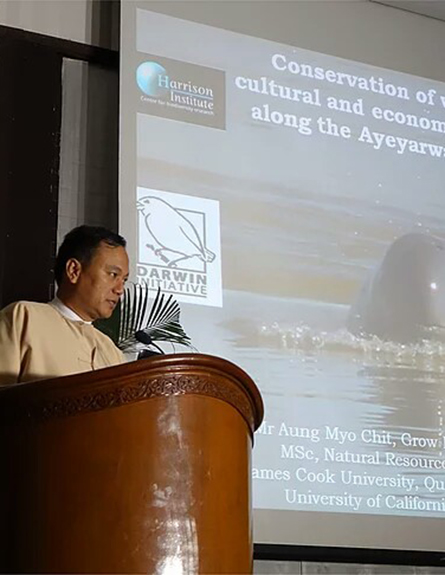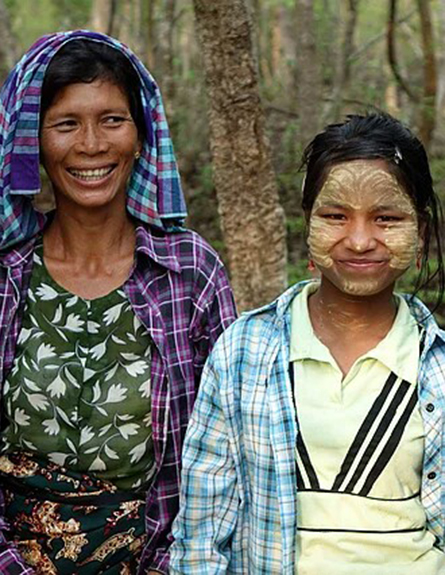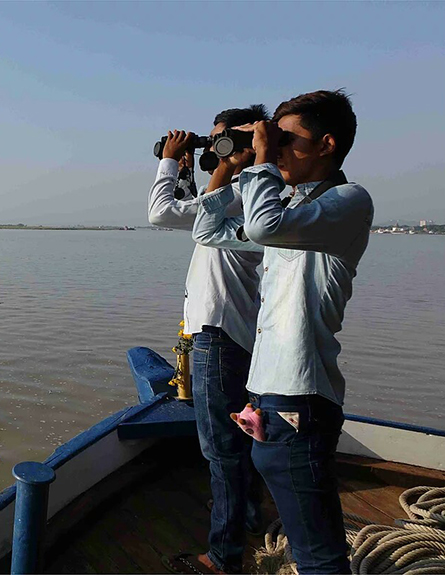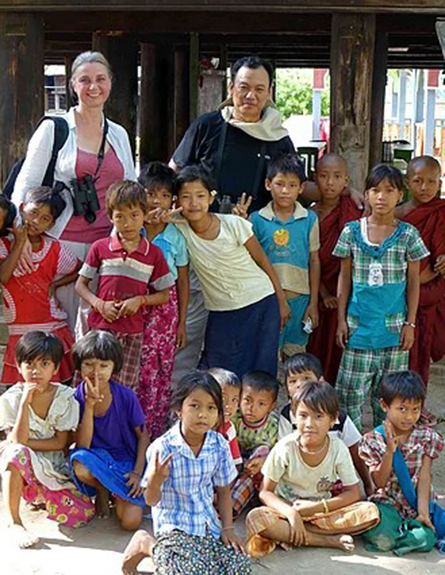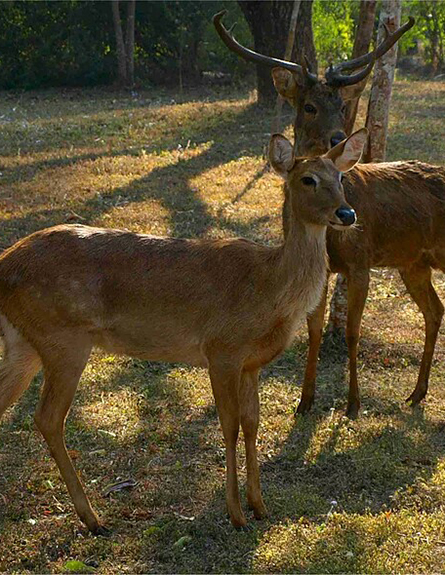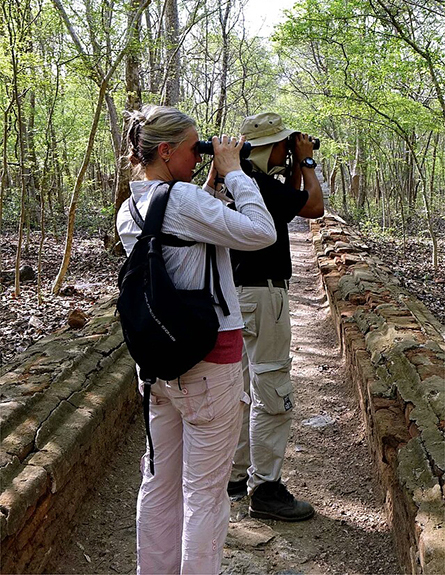Grow Back for Posterity
community-based solutions for wildlife conservation
Grow Back for Posterity (GBP) is involved in a series of long-term community-based conservation projects in Myanmar. In this work, it collaborates with local stakeholders, government (central and local), other national CSOs (Civil Society Organisations) as well as international conservation NGOs and universities, including those from Australia, Myanmar, Thailand, UK, and USA.
It is currently collaborating on a number of internationally funded projects, which are supported by a variety of sources including the Darwin Initiative (UK government) and CEPF (Critical Ecosystem Partnership Fund)
Current projects include:- an on-going programme (2009 to present) with the local communities of Sheinmaka town and Nga ye village, teachers, community leaders, the Forest Department and monks from Tawyagyi monastery to protect the wildlife, and especially the endangered Eld's deer (Rucervus eldii) in Tawyagyi Wildlife Sanctuary - see 'Gallery' for photos of the various activities.
- Working for the past five years with the fishermen of Hsithe, Myit Kan Gyi and Myayzun villages to develop appropriate alternative livelihoods that will help preserve their traditional culture of fishing co-operatively with the Irrawaddy River dolphins (Orcaella brevirostris) and conserve the critically-endangered dolphins themselves.
- Developing community-based tourism projects in Nagaland, western Myanmar which will help preserve cultural identity but also generate alternative income for the village communities.
- Developing guidelines and protocols with all stakeholders in the tourism industry in relation to 'dolphin watching'. This involves education and information programmes with tour guides, tour agents, boat owners, and national and international NGOs and universities.
- Developing guidelines and protocols with all stakeholders concerning waste management, pollution control, and the use of gill nets and electric fishing in the Ayeyarwady River.
